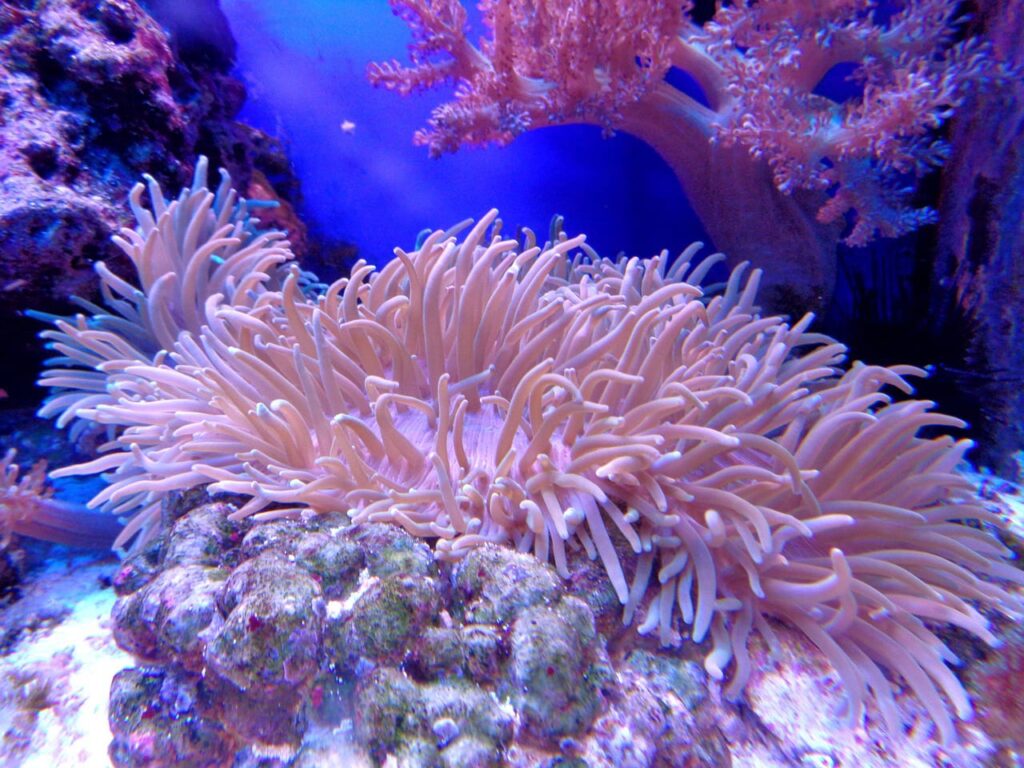December 11 – Corals


Corals are actually animals, not plants. Each animal builds a castle around itself and lives in the castle. The animal is actually called a “polyp,” and the castle it makes is the hard structure we call coral. At night, the coral polyp comes out to feed by waving its tentacles to catch microscopic animals. During the day, the coral polyp processes its food with the help of tiny algae called zooxanthellae. (The algae are caught by the coral and live within the coral polyp’s tissue.) This algae uses sunlight in the process of photosynthesis to make sugar. (That is one of the reason’s corals are only found in brightly lit water.) This sugar is then transferred to the coral polyp. The plant (algae) feeds the animal (coral). The coral, in turn, provides the algae with a protective home and carbon dioxide. Carbon dioxide is what the algae need in order to make food. If the algae is not present within the coral, the corals become fragile and ultimately die. Corals need algae, and the algae need corals. In fact, there is about three times more algal tissue than polyp tissue in a coral colony.
The algae also provide coral with their color. The algae’s chlorophyll mixes with the coral polyp creating the color. When corals lose their algae, zooxanthellae, they become white or bleached. Coral and algae help each other out! How did the coral know that it needed this type of algae, Zooxanthellae, to help it survive? How did it survive originally without it? How could they have evolved independently? Scientists call this symbiotic evolution, but throwing a word at something does not explain how it developed. God created these two to work together for each other’s benefit and to show His glory.
Psalm 98:6-7
Reference
Coral: Animal, Vegetable and Mineral
Corals Zooxanthellae …What’s That?
